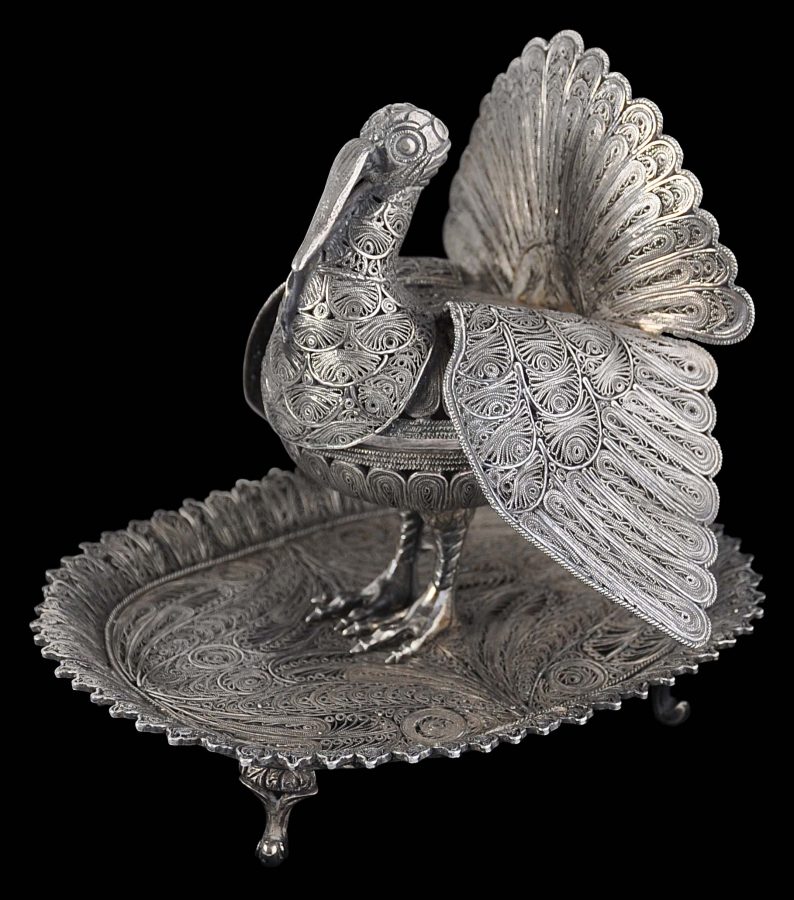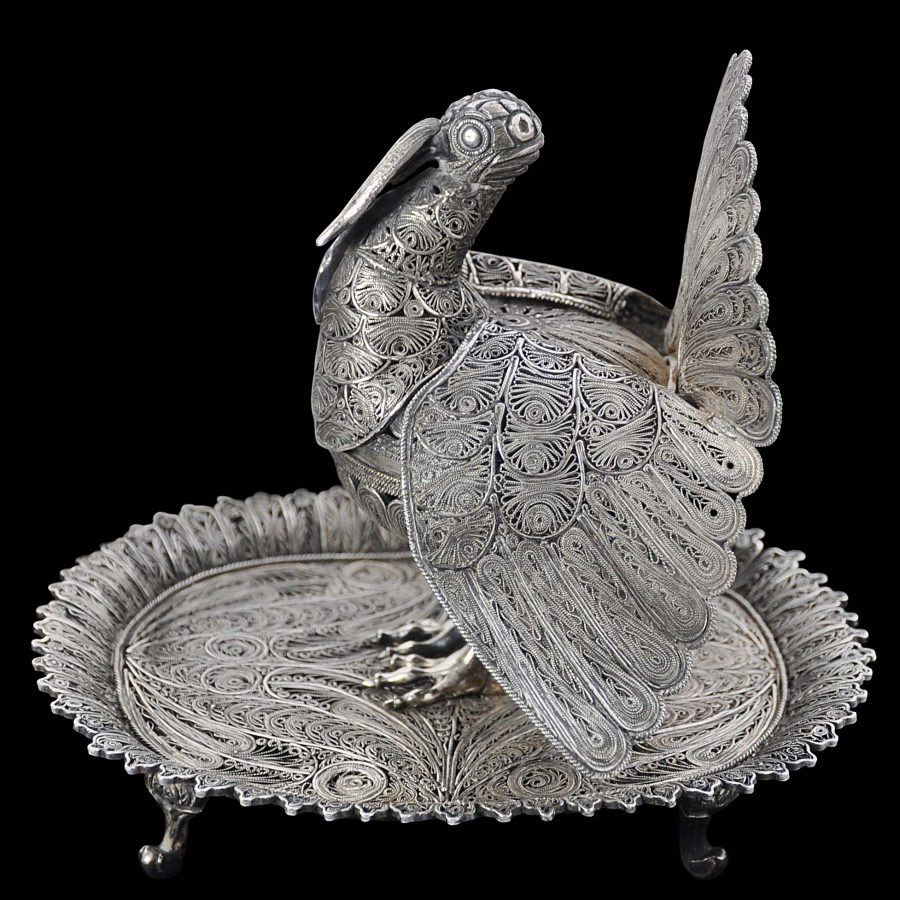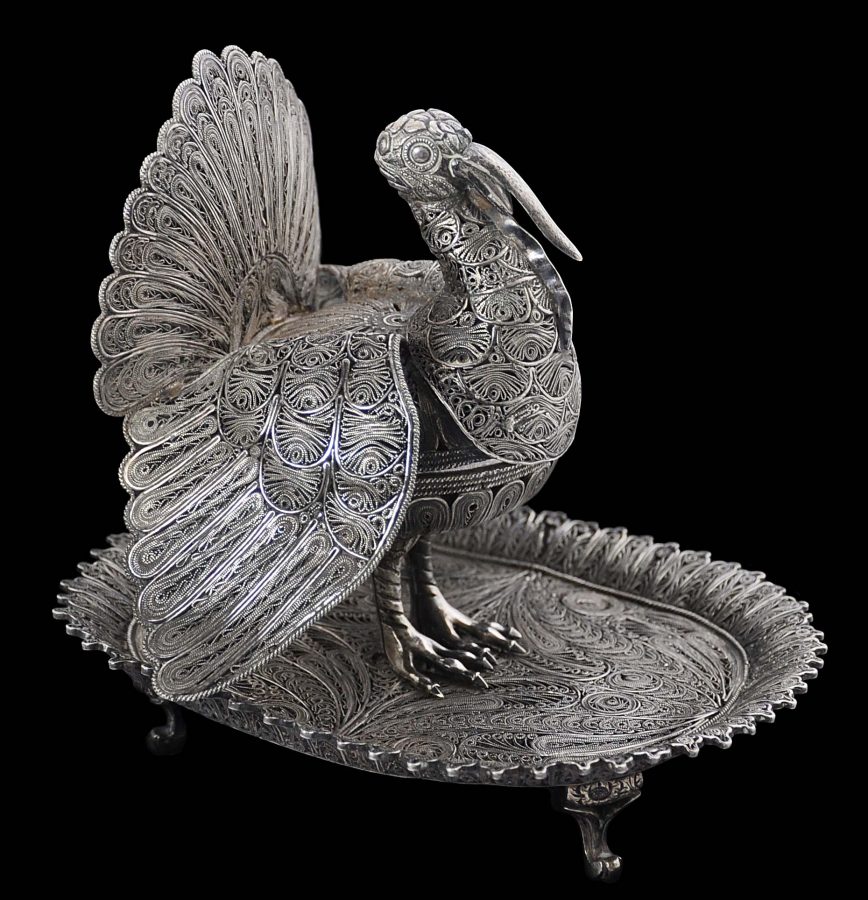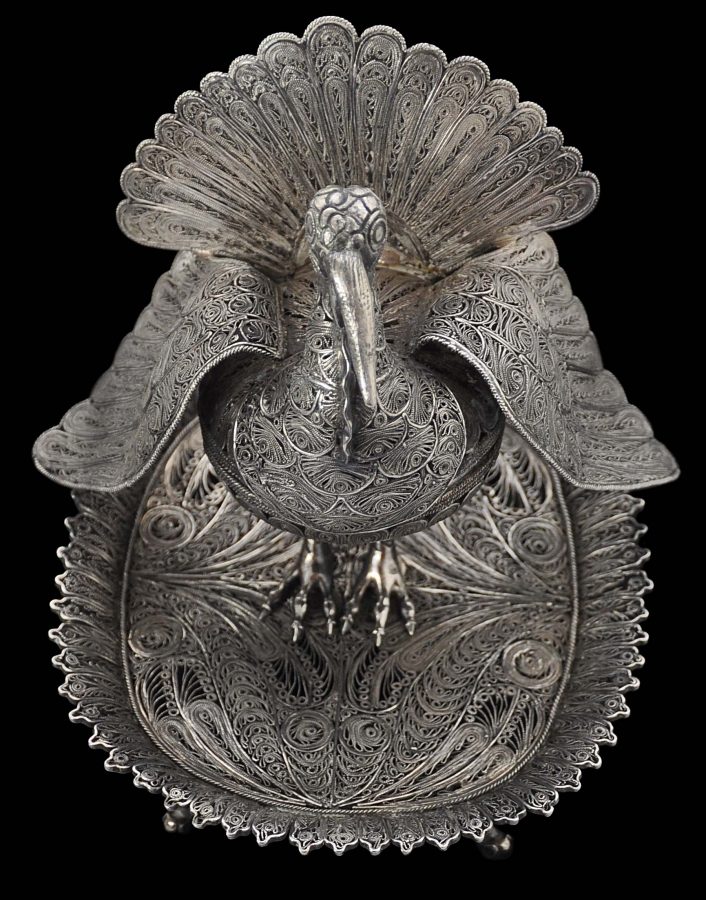Enquiry about object: 4796
Silver Filigree Incense Burner (Sahumador) Modelled as a Turkey
Peru, probably Ayucucho circa 1820
height: 14.6cm, depth: 15.6cm, weight: 564g
Provenance
UK art market
This incense burner modelled as a turkey has been executed almost entirely in silver filigree work. It is the best such modelled turkey that we have seen – its proportions and even its pose are all unusually realistic, right down to the long snood – the flap of skin that hangs down over the turkey’s beak. The turkey’s claws are also particularly naturalistically rendered.
The turkey is in two halves, with the top half lifting back but being hinged to the bottom half, to reveal the interior where the burning incense would have been placed.
The turkey stands on an oval silver filigree platform with a raised scalloped edge all the way round. The dish stands on four rococo solid cast silver feet.
The turkey is bolted to the filigree plate by means of two silver nuts and bolts apparent from the underside of the plate.
Silver filigree work was introduced to South America by colonial Spanish and Portuguese. There had already been a strong legacy of silver and gold usage in South America, both metals being mined and worked locally for local rulers. The Incas evocatively referred to gold as ‘ the sweat of the sun’ and silver as the ‘tears of the moon’.
This item possibly is from Ayucucho, a small central Peruvian city founded by the Spanish in 1544 and which became a centre for silver filigree production. Other silver filigree incense burners in the form of turkeys are known to have come from Ayucucho.
Similar examples of Peruvian silver filigree incense burners in the shape of a turkey are illustrated in Luis Ribera & Schenone (1981, p. 299), de Lavalle & Lang (1974, p. 109), and Taullard (2004). And see a similar example in the Hermitage Museum, Russia.
The example here is in perfect condition other than some loss to the filigree on just one of the sixty or so scallops that comprise the edge of the platform on which the turkey stands. But this is minor and compensated for by the superb modelling of the bird itself.
References
de Lavalle, J.A. & W. Lang, Plateria Virreynal: Arte Y Tesoros del Peru, Banco de Credito del Peru an la Cultura, 1974.
Luis Ribera, A., & H.H. Schenone, Plateria Sudamericana de los Siglos XVII-XX, Hirmer Verlag Muchen, 1981.
Taullard, A., Plateria Sudamericana, Ediciones Espuela de Plata, 2004.





